
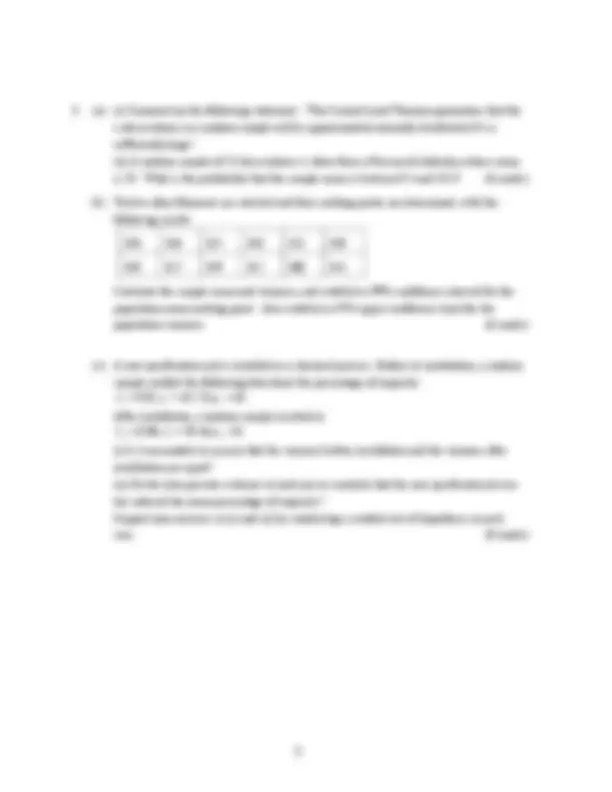
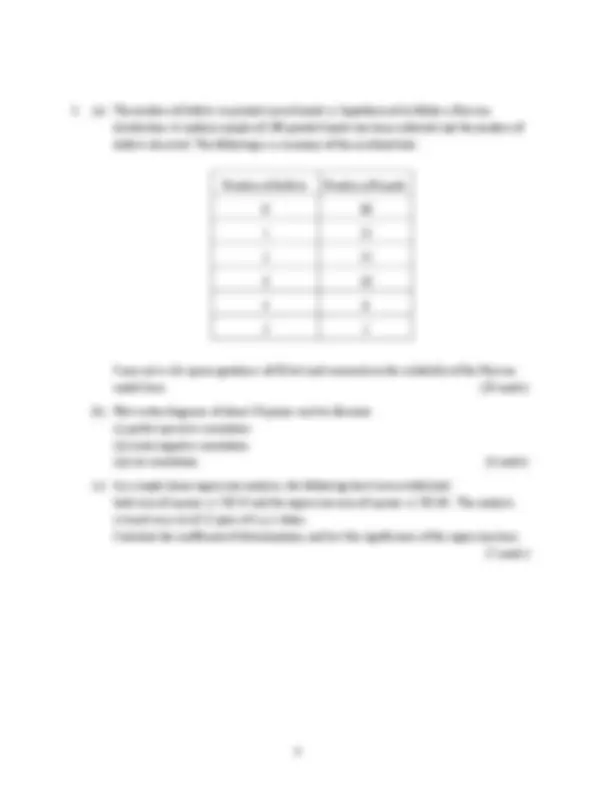
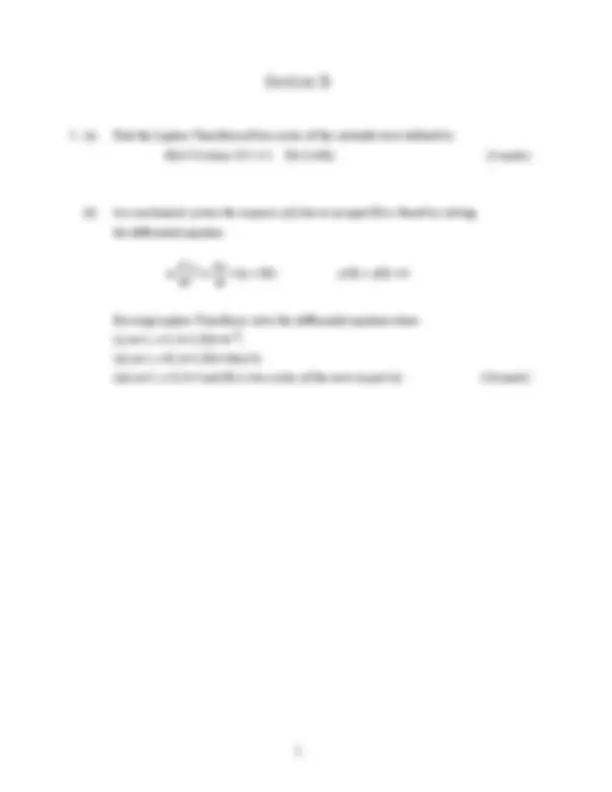
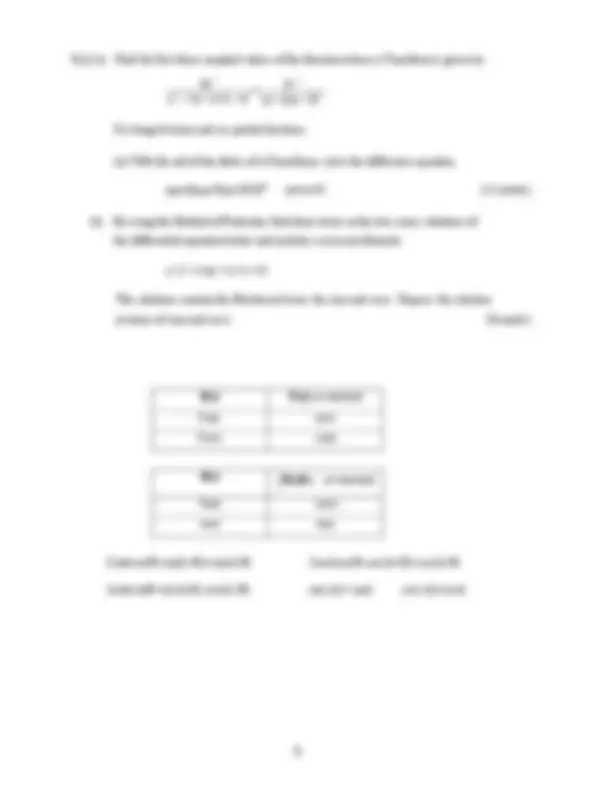
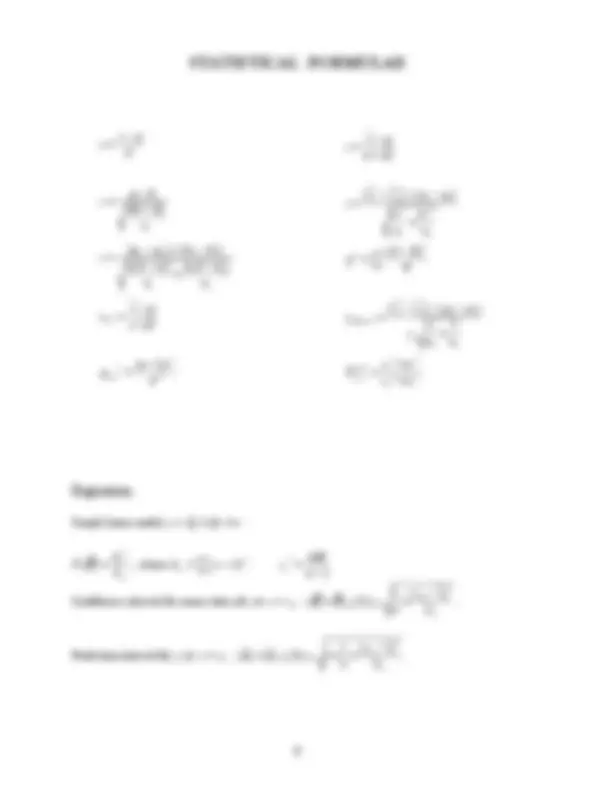
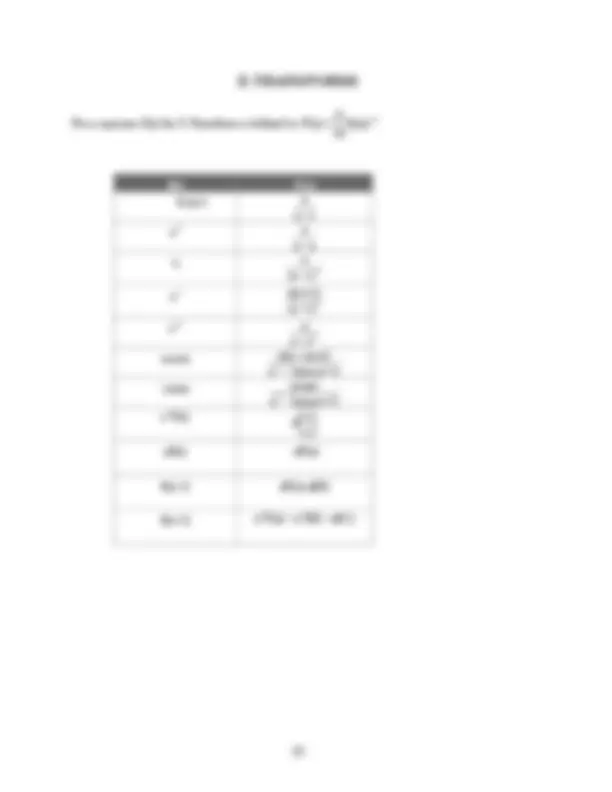


Study with the several resources on Docsity

Earn points by helping other students or get them with a premium plan


Prepare for your exams
Study with the several resources on Docsity

Earn points to download
Earn points by helping other students or get them with a premium plan
Community
Ask the community for help and clear up your study doubts
Discover the best universities in your country according to Docsity users
Free resources
Download our free guides on studying techniques, anxiety management strategies, and thesis advice from Docsity tutors
Main points of this past exam are: Flange Widths, Insulators, Certain Shipments, Important, Destructive, Inspection, Procedure Adopted, Insulator Fails, Sample Pass, Accepting Batches
Typology: Exams
1 / 11

This page cannot be seen from the preview
Don't miss anything!







(Level 8)
Answer FIVE questions, at least TWO questions from each Section. Use separate answer books for each Section. All questions carry equal marks. Statistical tables are available.
Examiners: Mr. J. Hegarty Prof. J. Monaghan Mr. D. O’Hare Mr.T.O Leary
r 100 200 300 400 P( X = r ) 0.25 k 0.1 0. Find the value of k and calculate the expected value and the variance of X. (5 marks) (c) (i) If the probability that a single article drawn from a continuous manufacturing process does not meet specifications is 0.08, what is the probability that a sample of 50 articles drawn from that process will contain 4 nonconforming items? (ii) Using the Poisson distribution as an approximation, answer the question in part (i). (5 marks)
(d) Serious paint blemishes on a flat automotive panel occur at a rate of one blemish for every ten body panels with blemishes occurring according to the pattern of a Poisson distribution. (i) What is the probability of more than one serious blemish on a randomly chosen body panel? (ii) How many body panels should be inspected in order to have a probability greater than 0.99 of observing at least one serious blemish? (5 marks)
0 , otherwise
50 ,for 0. 48 0. 52 ( )
x x f x
(i) Verify that this is a well-defined probability density function, and sketch its graph. (ii) Of the next 10000 connectors produced, how many do you estimate will have flange widths between 0.50 and 0.51mm? (7 marks) (b) (i) An exponentially distributed random variable, (^) X , has probability density function
and moment generating function ( ). t
M (^) X t −
λ
λ
Show, using the moment generating function or otherwise, that the mean and the standard deviation of X are both equal to 1. λ (ii) The waiting time, in minutes, before receiving attention at a customer service desk is exponentially distributed. If the proportion of all customers who wait more than 10 minutes is 0.01, what is the mean waiting time for all customers? (8 marks) (c) Three parts are assembled in series so that their critical dimensions x1, x 2 and x 3 add. The dimension of each part is normally distributed and the following are the relevant parameters: μ 1 = 100 , σ 1 = 4 ,μ 2 = 75 ,σ 2 = 4 ,μ 3 = 75 ,σ 3 = 2. What is the probability that an assembly chosen at random will have a combined dimension in excess of 262? (5 marks)
Number of defects Number of boards 0 38 1 22 2 22 3 10 4 6 5 2
Carry out a chi-square goodness-of-fit test and comment on the suitability of the Poisson model here. (10 marks) (b) Plot scatter diagrams of about 10 points each to illustrate (i) perfect positive correlation (ii) weak negative correlation (iii) no correlation. (3 marks) (c) In a simple linear regression analysis, the following have been established: total sum of squares is 220.45 and the regression sum of squares is 202.63. The analysis is based on a set of 12 pairs of ( x,y ) values. Calculate the coefficient of determination, and test the significance of the regression here. (7 marks)
f(t)=12t where 0 ≤ t≤ 1 f(t+1)=f(t). (4 marks)
(b) In a mechanical system the response y(t) due to an input f(t) is found by solving the differential equation
ky f(t) y(0) y(0) 0 dt
cdy dt
m d y 2
2
By using Laplace Transforms solve this differential equation where (i) m=1, c=4, k=4, f(t)=4e -2t, (ii) m=1, c=0, k=4, f(t)=16cos2t, (iii) m=1, c=3, k=2 and f(t) is two cycles of the wave in part (a). (16 marks)
f(t)=
π tif 0 t π f(t+2π)=f(t)
2
2
n
cosnx sinnx n
(π x)sinnx dx (π x)
n
sinnx cosnx n
Note: (π x)cosnx dx (π x) (7 marks)
(b) A uniform rod of length L is aligned along the x-axis between the points x= and x=L. The temperature v(x,t) at any point on a rod of length L at any instant is found by solving the partial differential equation
2
2 x
k v t
v ∂
The ends x=0 and x=L are maintained at temperatures of 20 0 C and 30 0 C, respectively. The initial temperature distribution is given by v(x,0)=f(x). By using a substitution
u(x,t)=v(x,t)-20- L
10x
solve this partial differential equation. In particular find the solution when f(x)= L
10x.
(13 marks)
8 (a) (i) Find the first three sampled values of the function whose z Transform is given by
2
2 3 2
2 (z 1 )(z 3 )
z 7z 15 9
4z − −
z z
Use long division and use partial fractions.
(ii) With the aid of the tables of z-Transforms solve the difference equation
yn+2 -6y (^) n+1 +8yn =10(3) n^ y 0 =y 1 =0 (12 marks)
(b) By using the Method of Frobenius find three terms in the two series solutions of the differential equation below and include a recursion formula.
x 2 y′′^ +2xy′+x^2 y= 0.
The solutions contain the Maclaurin Series for sinx and cosx. Express the solution in terms of sinx and cosx. (8 marks)
f(x) f ′ (x)^ a=constant Sinx cosx Cosx -sinx
Sinx -cosx cosx sinx
2sinAcosB=sin(A+B)+sin(A-B) 2cosAcosB=cos(A+B)+cos(A-B)
2sinAsinB=cos(A-B)-cos(A+B) sin(-A)=-sinA cos(-A)=cosA
n 0
F(z) f(n)zn
f(t) F(z) U(n)= z 1
z − a^ N z a
z − n (^2) (z 1)
z − n 2 (z 1)^3
z(z 1) −
e bn z eb
z − cosωn z 2 zcos 1
z(z cos ) (^2) − +
ω
ω
sinωn z -2zcos 1
zsin (^2) ω+
ω
a n f(n)
a F z
nf(n) -zF(z)
f(n+1) zF(z)-zf(0)
f(n+2) z^2 F(z)−z^2 f(0)−zf(1)
For a function f(t) the Laplace Transform of f(t) is a function in s defined by
F(s) e stf(t)dt 0
∞
f(t) F(s) A=constant A s t N^ N! s N^ +^1 e at^1 s −a sinhkt k s 2 −k^2 coshkt s s 2 −k^2
s 2 + ω^2
e atf(t) F(s-a) f (t) ′ (^) sF(s)-f(0) f (t) ′′ s F(s)^2 − sf(0) − f (o)′
f(u)du 0
t
F(s) s
f(u)g(t u)du 0
t
U(t-a) e s
-as
f(t-a)U(t-a) e^ −asF(s)
Note: coshA e^2 e sinhA e^2 e
A A A A = +^ = −
− −